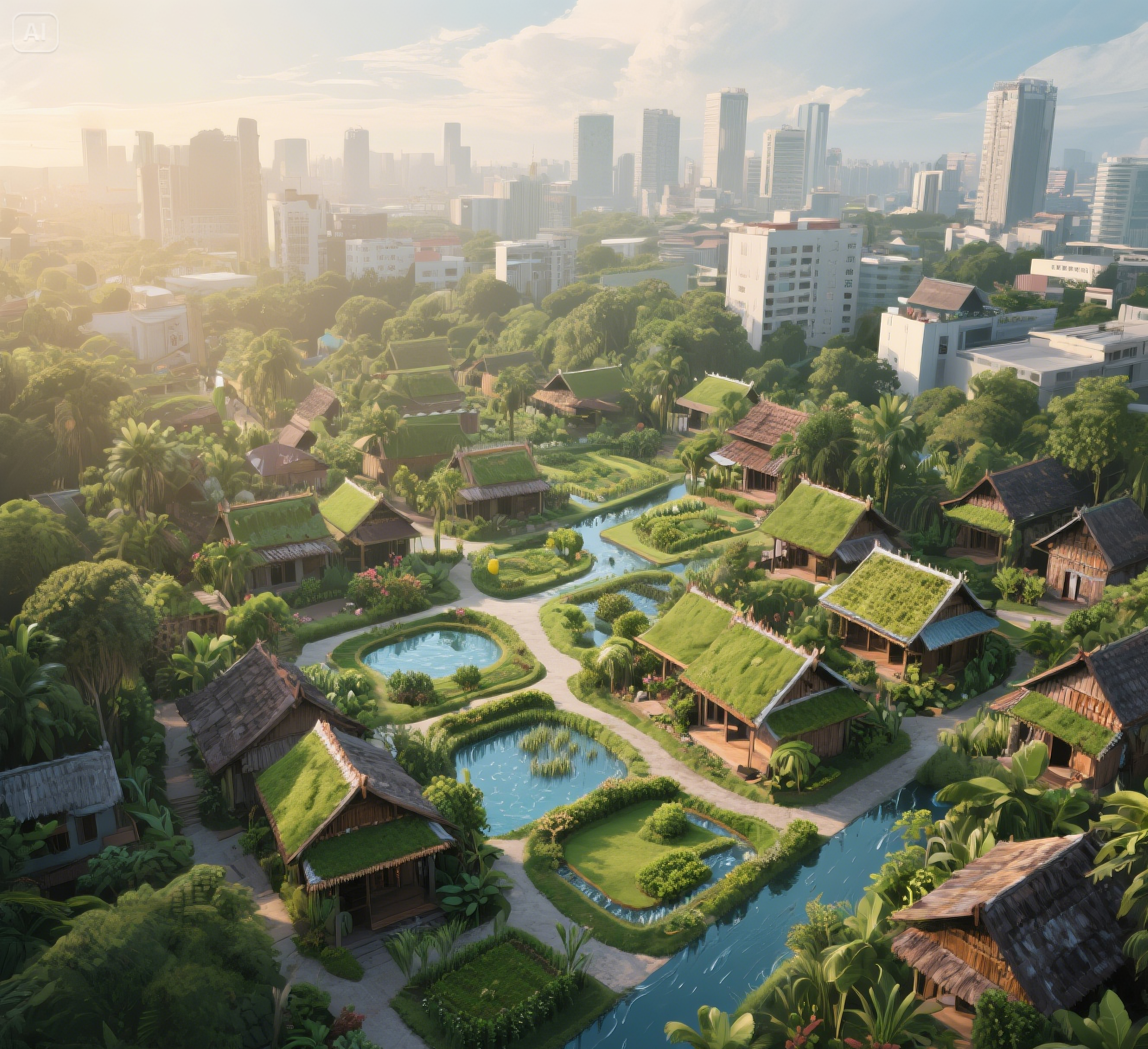-
Design Futures/
Cities/Climate Change
Jakarta's Sinking City Part 2
A Continuation from Rethinking Urban Futures with Kampung Wisdom: Modern Kampung Hybrid Examples from Jakarta and Beyond

- Candice Lim
Some projects show how kampung principles can be adapted to modern urban realities, though not without challenges.
Kampung Susun Bayam (Jakarta)
Located next to the Jakarta International Stadium, Kampung Susun Bayam is a “vertical kampung” consisting of three low-rise towers with 135 housing units, including provisions for disabled residents. It incorporates greenhouse urban farming and communal spaces like study rooms and libraries. The project was designed to rehouse over 600 families evicted from the original Kampung Bayam area. However, despite its innovative design, the project faced significant hurdles:
- Completed in 2022, it was only partially occupied by 2025 due to bureaucratic delays and permit issues.
- Residents protested perceived injustices in housing allocation, accusing authorities of favouring newcomers over original community members.
This case highlights that even well-designed, environmentally sensitive housing projects require community trust and effective governance to succeed 7, 8, 9, 10.
Kampung Lawas Maspati (Surabaya)
This heritage kampung preserves Dutch-era homes from before 1945, revitalised with urban greening initiatives such as medicinal plant gardens and aesthetically appealing heritage spots. The community developed a unique “Kampung Lawas” font inspired by the shapes of traditional roofs, fostering a strong visual identity that supports cultural tourism.
Residents actively manage tours and green spaces, turning the kampung into a living museum and economic opportunity. While this model showcases how cultural pride and vernacular architecture can drive sustainable urban renewal, its scalability to Jakarta’s denser, more complex slums remains uncertain 11, 12.
Read: Jakarta’s Sinking City: Rethinking Urban Futures with Kampung Wisdom and Modern Innovation








